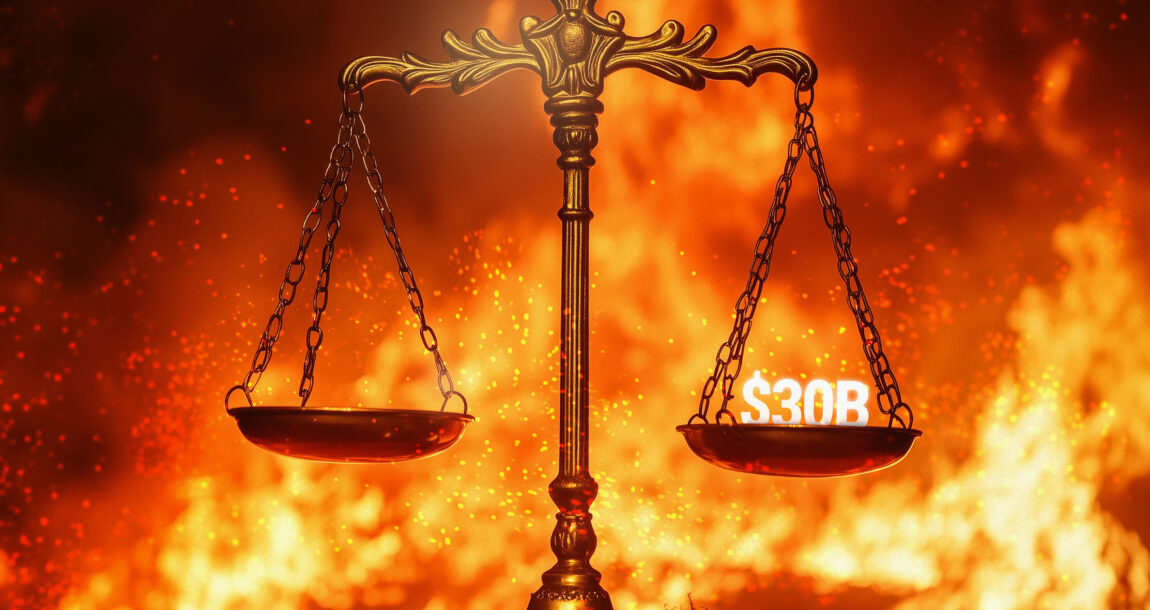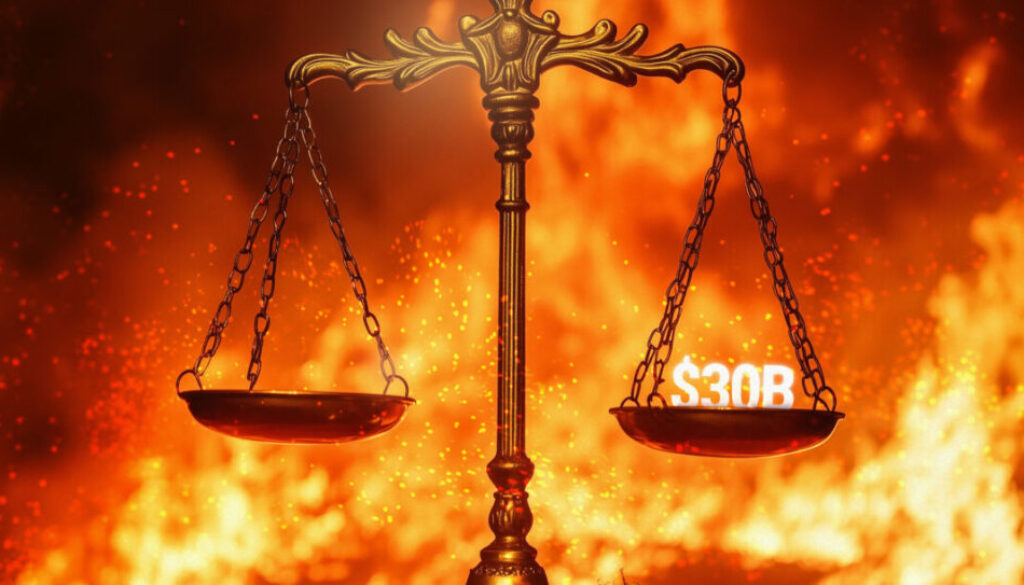Are the $30B LA fires a tipping point for the Calif. insurance market?

However – and whenever – the ashes finally settle and the embers burn out in the Los Angeles-area fires, there’s a consensus the tragedy has already wrought a tipping point in several areas of related activities including insurance, politics, climate change awareness and resilience.
For the moment, the damage estimates from the Los Angeles-area wildfires top a record $30 billion and additional economic losses figure in the hundreds of millions of dollars, sparking worst-case scenario predictions that the already teetering property insurance market in California will utterly collapse. More insurers will abandon the state, some believe, and rebuilding the burned-out areas will take years.
In the last year, companies representing more than half of California’s insurance market have either stopped or capped writing new insurance policies and have increased non-renewals because of heavy losses from wildfires.
Insurance reforms took effect Jan. 1, but fell short
Ironically, major insurance reforms spearheaded by the state’s insurance commissioner, Ricardo Lara, to expand insurance coverage only went into effect on Jan. 1, just days before the SoCal fires ignited.
“It’s really unfortunate timing because insurance companies are not even going to really evaluate the new environment that they’re in coming out of Lara’s changes before potentially retreating,” said Jordan Haedtler, finance strategies for Climate Cabinet, a grass-roots organization that provides climate policy recommendations to state and local officials. “I don’t know about the end of insurance in California, but it certainly is going to further rattle an already very fragile market. “
But a key element of the needed reforms that would allow insurance companies to account for fire mitigation steps taken by consumers in their underwriting, was not included. A bill to correct that has already been introduced and will likely see smooth sailing now, advocates said.
“Requiring mitigation to be included in insurance pricing models would reward the state, communities and homeowners for investing in home hardening, defensible space and forest treatment,” said Michael Jarred, associate director of external affairs and policy for the Nature Conservatory. “Despite being a proven tool in mitigating wildfire risk, insurance pricing models don’t currently recognize the value of forest restoration. The inclusion of landscape-scale mitigation in the catastrophe models would be a novel addition, given the industry’s focus on home hardening and defensible space.”
Unusual dry spell, winds create LA fire disaster
Still, others say little could have been done to mitigate the effects of the latest wildfire catastrophe. The combination of an unusual dry period – it hasn’t rained in Southern California for nearly a year – with exceedingly high winds created the perfect recipe for disaster, and one that will still have more insurers heading for the exits.
“Hotter, drier conditions driven by climate change are contributing to more intense wildfires and longer wildfires seasons across the American West,” said Rachel Cleetus, policy director, for the Union of Concerned Scientists. “The deadly and costly wildfires now raging across LA show how these underlying climate factors can collide with ferocious Santa Ana winds in densely populated urban settings with catastrophic consequences for people, their homes, emergency responders and critical infrastructure.
“People on the frontlines of risk need proactive investments in resilience, not the raised insurance rates and dropped policies that the current broken insurance system is delivering. Egregiously, even as these kinds of disasters leave communities reeling, private insurers are continuing to underwrite insurance for the expansion of massive new fossil fuel projects that are directly responsible for fueling the climate crisis.”
FAIR Plan says it can cover losses
California’s insurer of last resort, the FAIR Plan, said it would be able to cover losses in the Palisades area where the fire damage was most extreme. But if more insurers pull out or refuse to cover rebuilt homes, the plan could run out of money, forcing it to draw from primary insurers to recoup its costs under state law, raising rates throughout the state. The total value of FAIR-insured properties was $458 billion, three times the total insured value in 2020, according to its own data.
The stock prices of major P&C companies fell slightly following news of the fires but most recovered as the market apparently believes rising insurance rates will result in higher profits.
This week, stocks for insurers like Chubb, Mercury General, and Travelers began to rise, suggesting that investors believed potential losses had already been accounted for in earnings projections and revenues will stabilize. Allstate’s stock, for example, increased by nearly 1% in the last week.
The outlook for the insurance stock will depend on the total insured losses, regulatory reaction, and the likelihood for changes in underwriting practices in high-risk areas.
© Entire contents copyright 2025 by InsuranceNewsNet.com Inc. All rights reserved. No part of this article may be reprinted without the expressed written consent from InsuranceNewsNet.com.
The post Are the $30B LA fires a tipping point for the Calif. insurance market? appeared first on Insurance News | InsuranceNewsNet.




